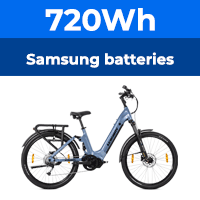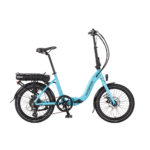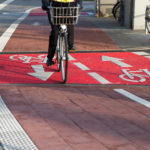it depends on what type of journeys you do. You have to consider whether the motor has enough power to keep the speed up hills. The thing you must avoid is running the motor at less than half of its maximum speed at full throttle. The higher the voltage, the higher the maximum speed. the 500W CST runs very well with 36v and 30 amps too give a cruising speed of about 20 mph and assistance up to about 24 mph, whilst still being able to climb long steep hills.If you don't have hills, a higher voltage would make it faster. 48V would also be OK if you're lighter - say 80kg or less.
Type of journeys:
1. Not steep but longish hills, within the city. My feeling is not much power is needed there. Also, I would limit my speed when at the city for security reasons
2. For the weekends, there are places I would like to go with steep hills
I weight 73kg, I am almost 39 and relatively fit. Why 48V is better is weight is less than 80kg?
For (1), I just want not to sweat at all, ie jump to the bike after having a shower, and reach destination as if I had just had a shower. Ideally, no pedalling at all (and Barcelona regulations allow that, as described in this thread).
For (2), I do not care about regulations much because everything is off-road.
When you wrote "the 500W CST runs very well with 36v and 30 amps too give a cruising speed of about 20 mph and assistance up to about 24 mph" in fact you meant "the 500W CST runs very well with 36v and 30 amps TO give a cruising speed of about 20 mph and assistance up to about 24 mph", right?
The comment "The thing you must avoid is running the motor at less than half of its maximum speed at full throttle" suggests a 36V configuration is best, because within the city, I would usually be at around 20km/h or even less. And for off-road, I really do not want speed, I prefer acceleration over speed.
The three-speed switch has two functions, which work differently:
Position one engages a fixed speed limit of 25km'hr
Position two does nothing - normal operation
Position three changed the timing of the FETs like having valve overlap in a IC engine. This allows the motor to give power to a higher speed than is normally possible. It only works with a hall sensor motor. You get about a 10% increase in speed, so the cruising speed on the 500W CST goes up to about 22mph. You should switch back to normal operation for hill-climbing. The KU123 also has speed limit jumper wires, to which you can add a switch. Don't forget that the speed limit has to be permanent. One operated by a switch doesn't count.
Let me see if I have understood you. There are two functions, as seen under Download at
http://www.bmsbattery.com/controller/364-universal-brushless-hub-motor-controller.html:
1. Speed limit wire: this wire just limits max speed permanently (as far as the connection is plugged at the controller). Is this a speed sensor, to be mounted on a spoke? How can I select the max speed I want (25km/h)?
When you say "The KU123 also has speed limit jumper wires, to which you can add a switch. Don't forget that the speed limit has to be permanent. One operated by a switch doesn't count", I guess the speed limit jumper wires you refer to is this "Speed limit wire". How could I add a stealthy switch such that I can turn on and off the speed limit at will?
2. 3-speed switch: these are the three options you describe. The first one allows what I want (limit max speed to 25km/h) without any further work.
The KU123 with the 3-speed switch seems to be ideal, since it is both sensored and unsensored, gives max amperage (30A) and does not require PAS and "odd" hydraulic brake e-switches. The disadvantage is I always have to control the throttle (instead of using a PAS level, which allows motor usage without the rider having to do anything at all), I do not know how much boring it is. Also, apparently sinus wave controllers are softer with the gears and less noisy. The 3-speed switch is handy, but not obvious its legality.








